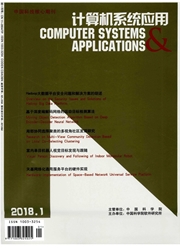

 中文摘要:
中文摘要:
RSKNN 算法是一种基于变精度粗糙集理论的 k-近邻改进算法,该算法能够保证在一定分类精度的前提下,有效地降低分类的计算量,提高分类效率。但由于 RSKNN 算法只是简单地将每个类中的样本划分成一个核心和边界区域,并没有根据数据集本身的特点进行划分,因而存在极大的局限性。针对存在的问题,提出一种多代表点学习算法,运用结构风险最小化理论对影响分类模型期望风险的因素进行分析,并使用无监督的局部聚类算法学习优化代表点集合。在UCI公共数据集上的实验表明,该算法比RSKNN算法具有更高的分类精度。
 英文摘要:
英文摘要:
RSKNN is an improved kNN algorithm based on variable parameter rough set model. The algorithm guarantees under the premise of a certain classification accuracy, effectively reduces the computation burden of the classified samples, and improves the computation efficiency and precision of classification. But in this algorithm ,the instances of each class are simply classified into core and boundary areas. It has the limitation that it isn’t classified according the features of datasets. An efficient algorithm aiming at learning multi-representatives for RSKNN is proposed. Using the theory of structural risk minimization, a few factors that determine the expected risk of new classification model are analyzed. And an unsupervised algorithm for partial clustering is used to build an optimal set of representatives. Experimental results on UCI public datasets demonstrate that the proposed method significantly improves the accuracy of the classification.
 同期刊论文项目
同期刊论文项目
 同项目期刊论文
同项目期刊论文
 期刊信息
期刊信息
